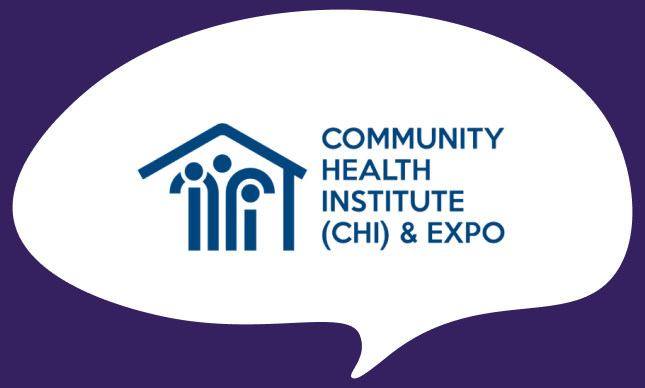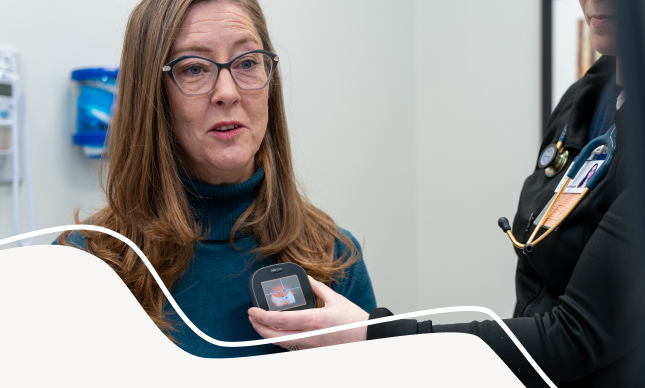Is this the future of health care?
a
It isn’t every interview that you get to see the inside of your source’s throat. But here I am, doing a video call with Andrew Patzke, director of strategic growth at Cleveland Clinic Canada, and he’s holding a fist-sized camera toward his mouth while placing a black tongue depressor inside. A few seconds later, I find myself murmuring approvingly at a close-up of his uvula.
A live image like that could help a doctor investigate issues such as a sore throat over the phone. The technology is called TytoCare and it’s part of Cleveland Clinic Canada’s new Virtual Clinic service, which offers telehealth visits augmented by a set of medical devices. A small TytoCare device combines a computer, thermometer and high-res camera; clip-on additions include an otoscope to look in the ears, a stethoscope to hear the heart and lungs, and a tongue depressor to examine your throat. It’s currently offered in Cleveland Clinic’s 10 Virtual Clinics across Canada, a sort of virtual doctor’s office where people can walk in and talk to a nurse practitioner right away via video conferencing.
The company is positioning this service as the walk-in clinic of the future—no wait time, no commute and open 12 hours a day, 365 days a year. It’s selling the concept to pharmacies, corporations and even condo buildings, like the Waverley, a 166-suite Toronto rental building that added a TytoClinic station in its mezzanine in October.
In addition to accessibility, the technology is a key part of what’s being offered. “What’s unique is that these tools are seamless and Health Canada–approved, which lets us use them to diagnose,” explains Jennifer Osborn, director of business development at Cleveland Clinic Canada. Because it’s a live feed, the nurse practitioner can direct patients to use the tools properly, while built-in artificial intelligence also helps capture the right shot.
Construction delays resulting from the pandemic slowed the rollout of TytoClinics; the initial plan was to have double the amount of stations available in buildings across the country. But COVID-19 also significantly grew the market for telehealth across Canada.
“Canada has lagged in [digital health care] adoption,” says Kai Lakhdar, a partner at PwC’s Strategy& consultancy. “Then, in the age of COVID, all of a sudden people weren’t willing or able to access a broad range of in-person services.”
As a result, the provinces changed the way they paid doctors so they could bill for virtual care, and doctors became incentivized—and allowed—to provide e-care. The result: according to a recent ICES report, over the first four months of the pandemic, virtual care increased 56-fold, making up 71 per cent of primary care visits.
The public, says Lakhdar, was ready for this shift. “They’re digitally savvy. It’s often more convenient and well-established that [e-medicine] can solve many [patients’] problems.” According to a 2018 survey for the Canadian Medical Association, only eight per cent of respondents had used virtual care but 69 per cent said they would use it if it were available. “At the peak of COVID-19,” Lakhdar adds, “60 per cent of health care visits were conducted virtually.”
The market for virtual care, which PwC estimates is worth nearly $1.5 billion in Canada, is only a few years old. But Lakhdar believes it’s poised to hit mass-market adoption within the next five years. Emerging names such as Maple, Dialogue, Akira, WELL, Teladoc and Cleveland Clinic are vying for dominance during this growth period in the same way companies fought over the electronic medical records market over the past decade. “It’s a market share grab right now,” he says. “Only a few of these companies will survive.”
Of course, the provincial governments may be competitors as well. The Ontario Telemedicine Network facilitates virtual care across many settings; in British Columbia, Alberta, Saskatchewan and Ontario, TELUS Health MyCare offers virtual doctor visits that are free to consumers. Its goal is to be used after hours, when doctors aren’t available, and by the 14.5 per cent of Canadians who don’t have a family doctor.
Unlike regular walk-ins, Cleveland Clinics’ TytoClinics aren’t available to any Canadian with a health card. Instead, the idea is that pharmacies, employers or building owners pay an annual fee for members of their group to access Cleveland Clinic’s doctors virtually (the average individual cost per year is $299 per person, and less for group rates). The company positions Virtual Clinics in the same category as dental care or physiotherapy—medical services that would regularly be paid for by employers or individuals. But not everyone agrees.
A recently released position statement from the group BC Family Doctors calls on the government to “regulate and control the expansion of private, commercial interests in for-profit telemedicine in B.C.” It points to potential issues such as the rise of telemedicine increasing “episodic care” (care that is outside of an ongoing patient-provider relationship) based on the premise that continuity (being able to see the same doctor from visit to visit) is a key aspect of high-quality medical care. The group also suggests conflict-of-interest rules should be used to prevent the establishment of virtual care clinics in pharmacies, who would likely profit from the prescriptions they generate.
The future of virtual health is arriving, though it’s not yet clear what it will look like. In the meantime, don’t be surprised if one of Cleveland’s Virtual Clinics pops up in the lobby of a condo in your town soon.
Click here to read the full article


